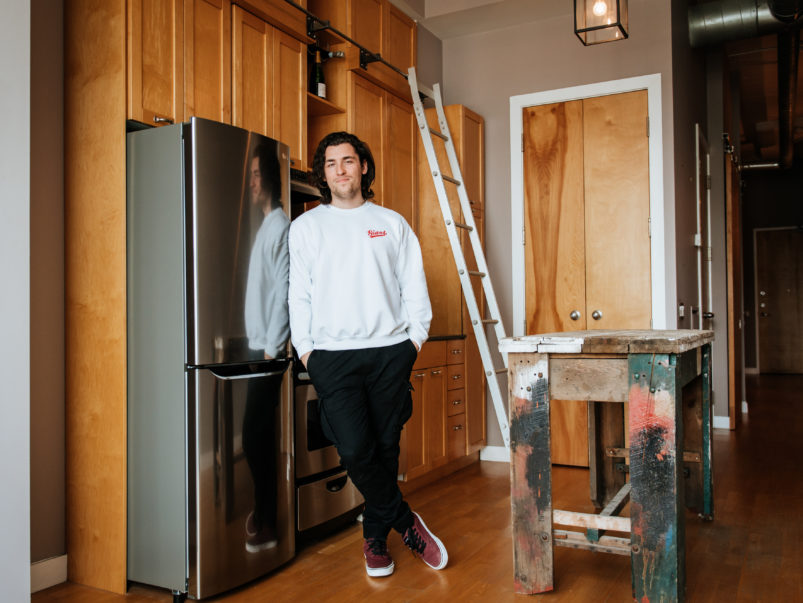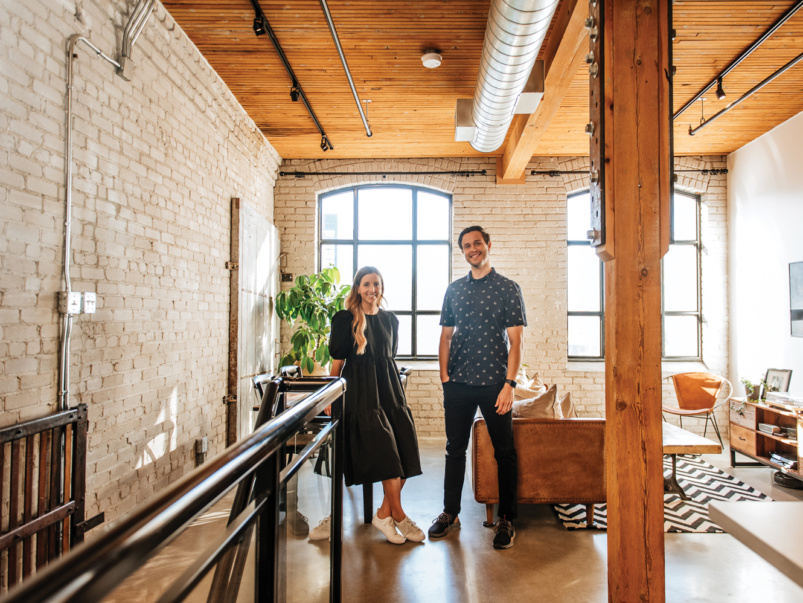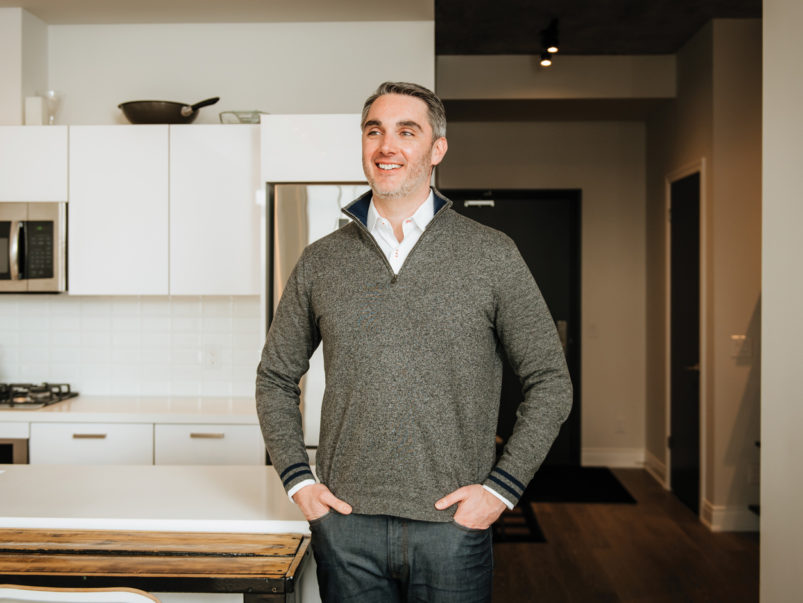The Downtown Rebound
What will downtown look like when the pandemic is over? Optimistic investors, condo buyers, hoteliers and restaurateurs are betting big on a post-pandemic comeback. Are they crazy? Brilliant? Both?
Pre-pandemic, the Path system pumped hundreds of thousands of people through the core every day, like arteries carrying blood to Toronto’s vital organs. Then the blood stopped flowing. For months, the Path has been as quiet as catacombs. Even when stores were allowed to open, fewer than half of them did. Clerks and shoeshiners stood at their kiosks, alone and alert, like party hosts anxiously awaiting their first guests. Downtown’s skyscrapers, like the tunnels below, were empty. Among those who could work remotely, many swapped their half-million-dollar micro-condos for houses with big backyards in small towns.
But downtown Toronto has been in existential peril before. And every time, it has bounced back better. In 1904, a fire burned through a hundred buildings in the heart of the city. The structures that replaced them, including Union Station, were made from more resilient materials, and the calamity inspired an expansion of the fire department. Just over a decade later, the Spanish Flu—which closed the city down and killed 1,750 Torontonians—led to the creation of Canada’s federal health department, one of the main bodies leading the fight against Covid today.
The question is not whether downtown Toronto will rebound from Covid, but how. What innovations and improvements can emerge from this pandemic? An army of city planners, political advisory committees and think tanks have spent the last year pondering this question. They’ve prepared countless reports about how to bring back small businesses, how to attract foreign investment, how to ensure the new Toronto is more equitable than the old Toronto. Those reports imagine a city brimming with green space and affordable housing, connected by city-wide broadband. They envision a downtown that’s no longer just a place where commuters converge, but a vibrant neighbourhood unto itself.
In many ways, this post-pandemic vision is already becoming a reality. By 2024, the now-derelict Port Lands will be an unrecognizable paradise of trails and playgrounds. The Green Line, a five-kilometre stretch of connected parks along the Dupont hydro corridor, will spirit West Enders into Yorkville. Across the core, city streets are reorienting to better serve local pedestrians, cyclists and transit takers. The new John Street cultural corridor will feature public art and space for sidewalk performances. And the most dramatic facelift will take place on Yonge Street, where, between Carlton and Queen, the road will shrink two lanes to accommodate wider walkways and sidewalk patios.
Another noteworthy development, further north on Yonge: a 66,000-square-foot IKEA at the base of the Aura condo building. Its Malm bed frames and Billy bookcases will no doubt fill the tens of thousands of new units coming to the core in the years ahead. There are currently more cranes in the sky in Toronto than in New York and Los Angeles combined, building a staggering number of residential units. Urban thinkers predict that developers will start converting vacant office spaces into condos, perhaps with their own built-in co-working spaces to accommodate the ballooning WFH set. Of the slew of towers coming to the area, two along Yonge Street will be the tallest in the city, both nearly 100 storeys high.
Given the glut of empty real estate available right now, this building boom seems bonkers—but it may be prophetic. The city expects the number of people living south of Bloor to double within 20 years, and developers are keen to cash in on the demand. Before the pandemic, Toronto was the fastest-growing metropolitan area in North America, adding 10,000 people each month. That was good news: the city was sprouting tech jobs, and its universities were attracting international students. But we were also running out of places to put people. For all the destruction the pandemic has wrought, it has also provided Toronto with a window to catch up, to build enough homes for everyone who wants to live here.
The people behind downtown’s newest towers see Covid as a pause in the city’s growth, not a full stop, and they’re betting big on the promise that Toronto will eventually resume its pre-pandemic hot streak. They’re encouraged by the wave of fearless buyers now scooping up condo stock—in February, there was a 63 per cent year-over-year spike in condo sales—and the Bay Streeters who are eager to get back into their boardrooms. Last winter, even as the city was anticipating the dreaded third wave, nearly two-thirds of people who worked downtown pre-pandemic said they’d be comfortable returning to work. That figure will only rise as the virus wanes and other parts of the core—the clubs, theatres and cafés—reopen.
The point is, though many of us can exist almost entirely inside our own homes, few of us want to. Downtown’s draw was never just about short commutes or the companies that fuel an economy. It was about meeting friends for a drink after work on a patio, spending sunny afternoons on the Island, packing into Jurassic Park for Raptors games and spilling out of Massey Hall after a concert.
No one—not the developers, condo buyers or cultural kingpins—is expecting a quick payoff on their investment in Covid-plagued Toronto. Even if the pandemic ends in 2021, we’ll spend months scanning QR codes to get into malls, wearing masks on the TTC and cancelling plans at the slightest tickle in our throats.
When downtown comes back to life, some of our favourite institutions will be gone. But there will be new dishes to eat, museums to see and hotels to visit. For all the people who left Toronto, there are many more who stayed—the creative, ambitious and optimistic urbanites who turned their restaurants into grocery stores, staged plays on Zoom and found ways to make pandemic living better. Their energies are not depleted, just pent up. When Covid finally recedes, they will be at the forefront of Toronto’s urban renaissance, rebuilding the city one concert, brewpub or pop-up at a time.
In this series, we’ll take a look at the people gambling on downtown’s eventual rebound, the glam new restaurants and hotels they’re creating, the mixed-use developments they’re building in the sky. The core’s biggest believers are playing the long game, wagering that the things that lured the world to Toronto—high-paying jobs, well-ranked schools, Drake’s civic cheerleading—haven’t changed. They see the city as a suffering stock destined to bounce back, and they’re buying in now, before it’s too late.
This story appears in the May 2021 issue of Toronto Life magazine. To subscribe for just $29.95 a year, click here.










